What are glands in the human body. Comprehensive Guide to Glands in the Human Body: Understanding Their Anatomy and Functions
What are the different types of glands in the human body? How do they function, and what role do they play in our overall health and well-being? Discover the answers to these questions and more in this in-depth exploration of the human gland system.
The Endocrine System: The Body’s Chemical Communicators
The human body is a complex and interconnected system, and at the heart of this system are the glands. Glands are specialized organs that produce and release substances, known as hormones, into the bloodstream or directly to the exterior of the body. These hormones play a crucial role in regulating a wide range of physiological processes, from growth and development to metabolism, mood, and reproduction.
Endocrine Glands: The Hormone Producers
Endocrine glands are a specific type of gland that are part of the endocrine system. These glands secrete hormones directly into the bloodstream, allowing them to be transported to target tissues throughout the body. Some of the key endocrine glands include the:
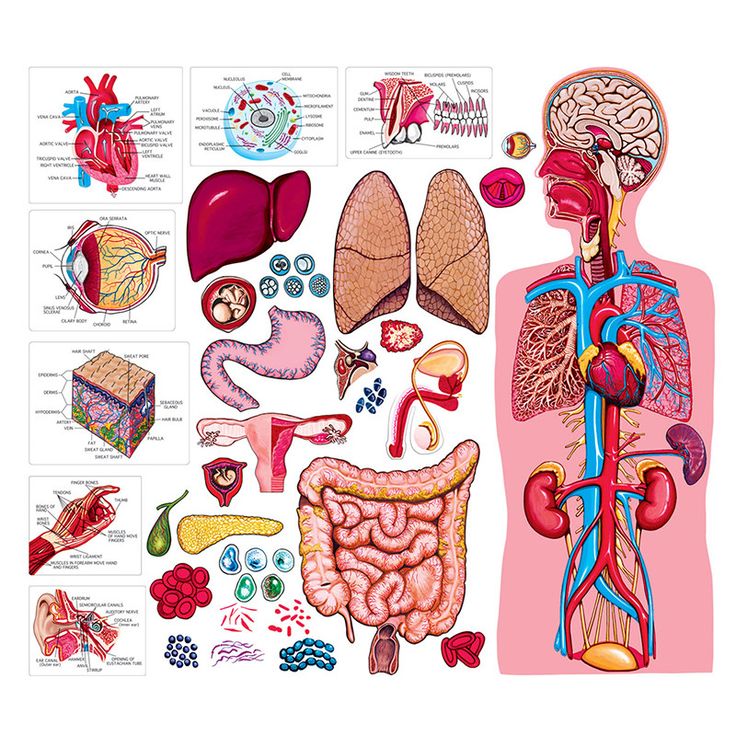
- Pituitary gland: Often referred to as the “master gland,” the pituitary gland is a small, pea-sized organ located at the base of the brain. It produces a variety of hormones that regulate essential bodily functions.
- Thyroid gland: Situated in the front of the neck, the thyroid gland secretes hormones that control metabolism, heart rate, and body temperature.
- Adrenal glands: Perched atop the kidneys, the adrenal glands produce hormones that help the body respond to stress, regulate blood pressure, and control the body’s use of fats, proteins, and carbohydrates.
- Pancreas: This organ has both endocrine and exocrine functions, producing hormones like insulin and glucagon that regulate blood sugar levels.
Exocrine Glands: The External Secretors
In contrast to endocrine glands, exocrine glands produce substances that are released through ducts to the exterior of the body, rather than directly into the bloodstream. These substances, which include sweat, saliva, and tears, play important roles in functions such as body temperature regulation, skin and eye protection, and digestion. Examples of exocrine glands include:
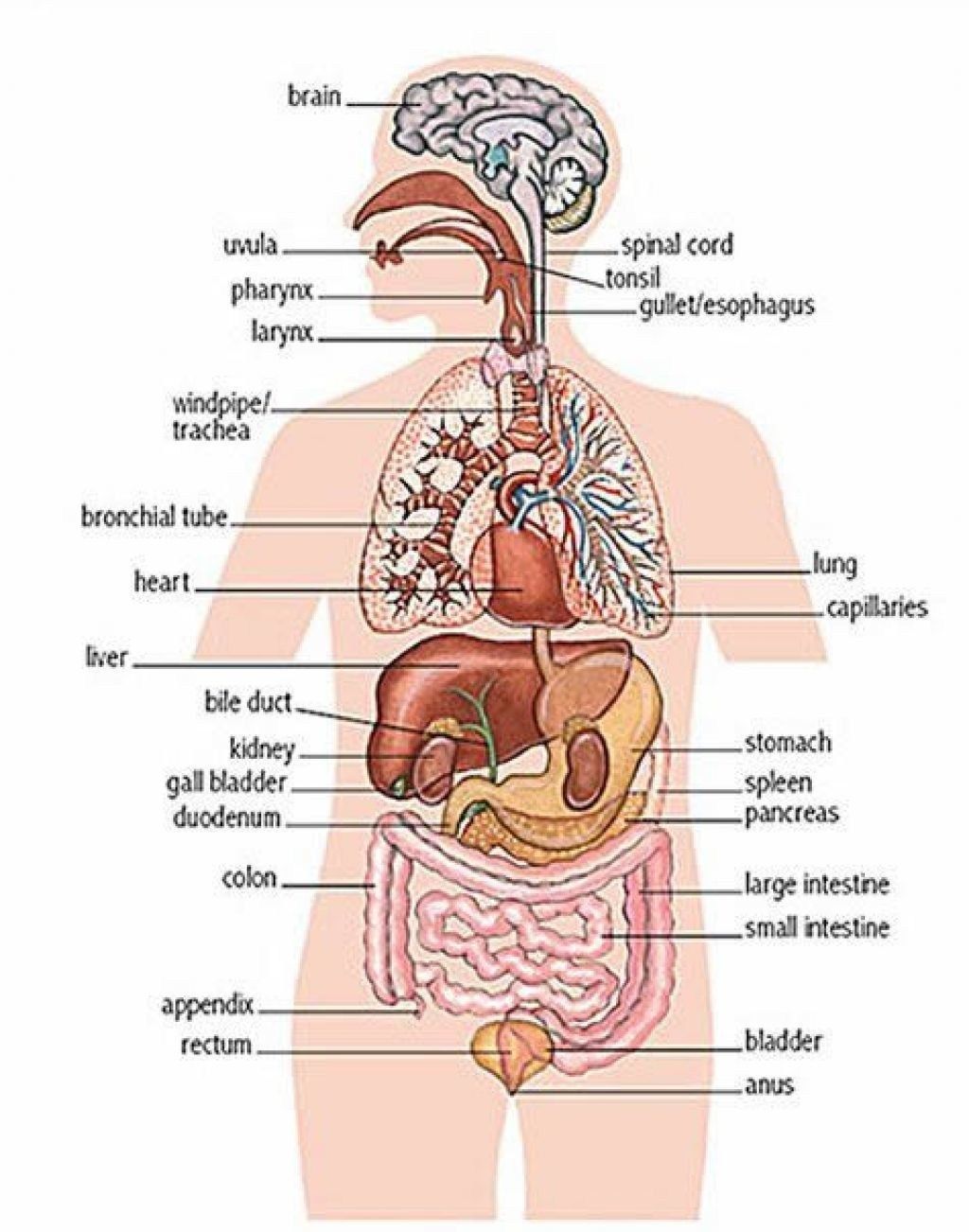
- Salivary glands: Located in the mouth, these glands produce saliva to aid in chewing, swallowing, and maintaining oral health.
- Sweat glands: Found throughout the skin, these glands release perspiration to help regulate body temperature.
- Mammary glands: These glands in the breasts produce milk to nourish infants.
The Hypothalamus: The Brain’s Glandular Control Center
The hypothalamus, a small region at the base of the brain, plays a crucial role in the endocrine system by acting as a communication center between the nervous system and the endocrine system. The hypothalamus produces hormones that stimulate or inhibit the release of hormones from the pituitary gland, which in turn regulates the activity of other endocrine glands throughout the body.
The Pineal Gland: The Body’s Internal Clock
Located deep within the brain, the pineal gland is responsible for the production of melatonin, a hormone that helps regulate the body’s circadian rhythms and sleep-wake cycles. The pineal gland also plays a role in the regulation of female hormones, affecting the menstrual cycle and fertility.
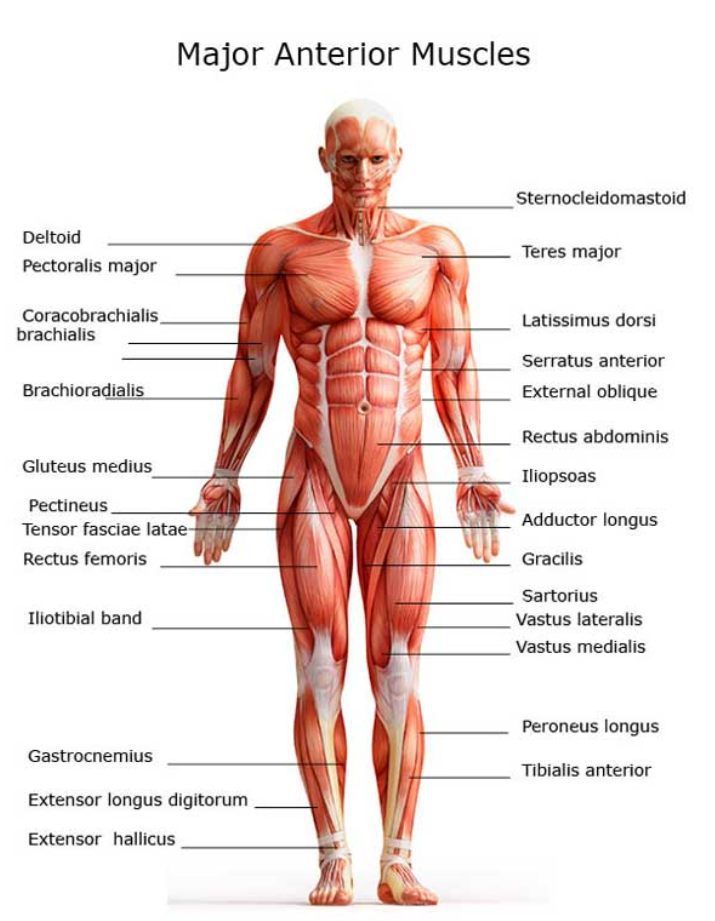
Lymph Nodes: Not True Glands, but Important Nonetheless
While lymph nodes are often referred to as glands, they are not true glands in the physiological sense. Lymph nodes are part of the lymphatic system, which is responsible for filtering and removing waste, toxins, and other unwanted materials from the body. Lymph nodes help the body fight infection and disease by housing immune cells that can detect and respond to foreign substances.
The Diverse Functions of the Glandular System
The glands in the human body serve a wide range of important functions, from regulating metabolism and body temperature to controlling the production of hormones that govern growth, development, and reproduction. Understanding the anatomy and roles of these specialized organs is crucial for maintaining overall health and well-being.
For example, the thyroid gland plays a critical role in metabolism, with both underactive (hypothyroidism) and overactive (hyperthyroidism) thyroid conditions leading to a host of symptoms and health problems. The adrenal glands, on the other hand, are essential for the body’s stress response, producing hormones like cortisol and adrenaline that help us cope with challenging situations.
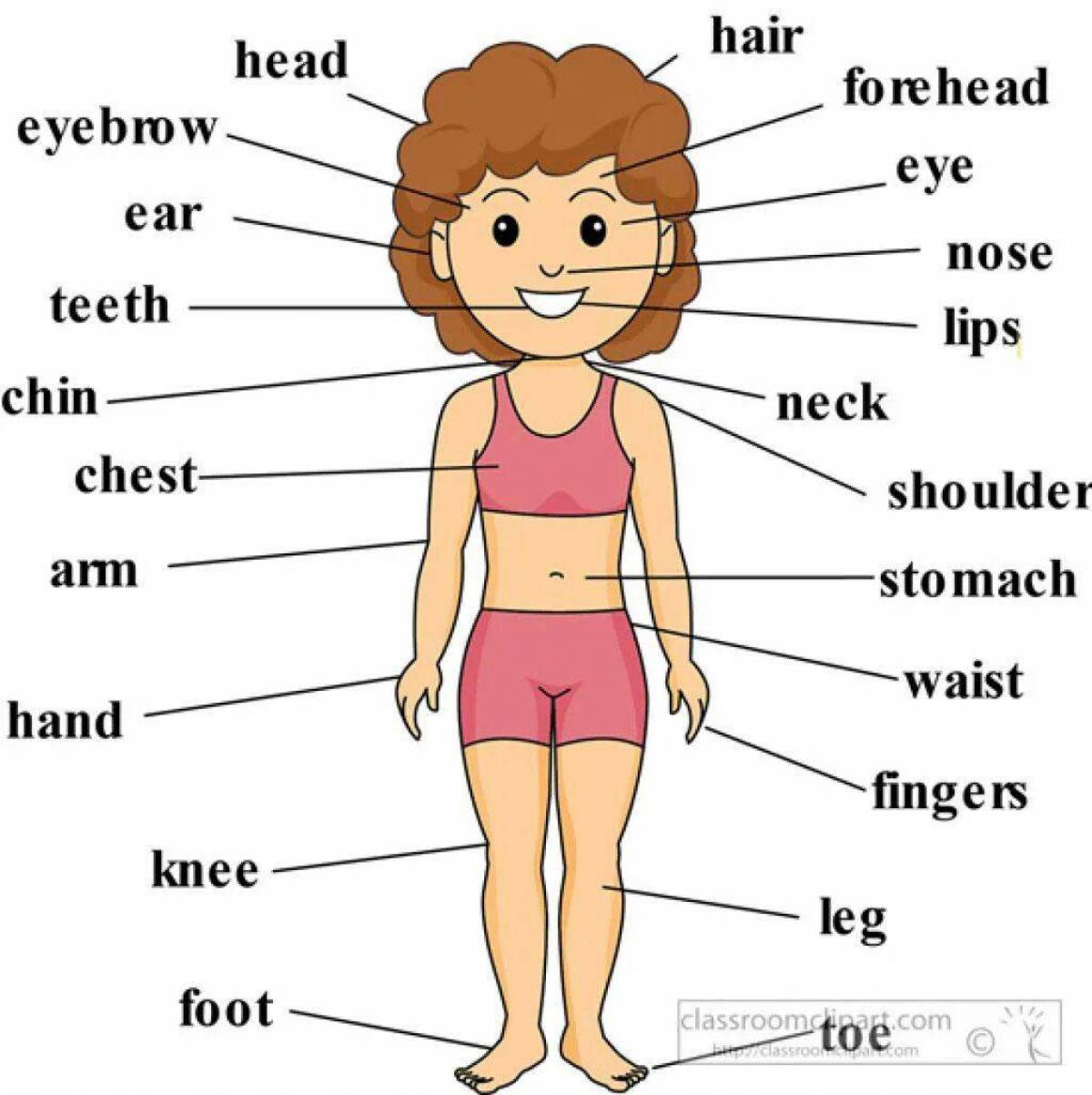
Proper glandular function is also vital for managing conditions like diabetes, where the pancreas fails to produce enough insulin to regulate blood sugar levels. Similarly, imbalances in the hormones produced by the pituitary, thyroid, or other endocrine glands can contribute to a variety of health issues, ranging from growth and development problems to infertility and mood disorders.
By understanding the roles and interconnectedness of the different glands in the body, healthcare professionals can better diagnose, treat, and manage a wide range of endocrine-related conditions, ultimately improving the overall health and well-being of their patients.
What Are Glands? The Anatomy and Function
Glands are important organs located throughout the body. They produce and release substances that perform certain functions. Though you have many glands throughout your body, they fall into two types: endocrine and exocrine.
Endocrine and exocrine glands serve very different purposes in the body.
Endocrine glands
Endocrine glands are part of your endocrine system. They make hormones and release them into your bloodstream. These hormones control a number of important functions in your body, such as:
- your growth and development
- metabolism
- mood
- reproduction
Your endocrine glands include:
- adrenal glands
- pituitary gland
- hypothalamus
- thyroid
- pineal gland
There are also organs that contain endocrine tissue and act as glands. These include the:
- pancreas
- kidneys
- ovaries
- testes
Exocrine glands
Your exocrine glands produce other substances — not hormones — that are released through ducts to the exterior of your body, such as sweat, saliva, and tears.
The substances released by your exocrine glands play important roles in your body. They do things like help regulate your body temperature, protect your skin and eyes, and even help mothers feed babies by producing breast milk.
Your exocrine glands include:
- salivary
- sweat
- mammary
- sebaceous
- lacrimal
Lymph nodes are often referred to as glands, but they’re not true glands. They’re part of your immune system and help your body fight infection.
You have glands throughout your body, all varying in size and function. Here are a few examples of these glands and what they do.
Thyroid gland
Your thyroid gland is located in the front of your neck, just below your larynx. It measures approximately two inches and has a shape similar to a butterfly. It secretes hormones that affect virtually every tissue in your body. Thyroid hormones regulate your metabolism, heart, and digestive function. They also play a role in your brain and nerve development, muscle control, and mood.
Your thyroid function is controlled by your pituitary, which is a small gland at the base of your brain.
Pituitary gland
The pituitary gland is a pea-sized gland at the base of your brain, just behind the bridge of your nose. It’s controlled by the hypothalamus, which sits just above it. The pituitary gland is often called the master gland because it controls a number of other hormone glands, including the:
- thyroid
- adrenal gland
- testes
- ovaries
Hypothalamus
The hypothalamus functions as a communication center for your pituitary gland, sending signals and messages to the pituitary to produce and release hormones that trigger the production and release of other hormones.
Your hypothalamus influences a number of your body’s functions, including:
- temperature regulation
- food intake
- sleep and wakefulness
- thirst
- memory
- emotional behavior
Pineal gland
Your pineal gland is located deep in the center of your brain. Its function is not completely understood, but we do know that it secretes and regulates certain hormones, including melatonin. Melatonin helps regulate your sleep patterns, which are also known as circadian rhythms.
Its function is not completely understood, but we do know that it secretes and regulates certain hormones, including melatonin. Melatonin helps regulate your sleep patterns, which are also known as circadian rhythms.
The pineal gland also plays a role in the regulation of female hormones, which affect the menstrual cycle and fertility.
Adrenal glands
Your adrenal glands are located at the top of each kidney. They produce various hormones, some of which include:
- cortisol
- aldosterone
- adrenaline
- a small amount of sex hormones called androgens
The hormones produced by your adrenal glands have several important functions. They help your body:
- control blood sugar
- burn fat and protein
- regulate blood pressure
- react to stressors
Pancreas
The pancreas — a long, flat organ located in your abdomen — is made up of two types of glands: exocrine and endocrine. The pancreas is surrounded by the small intestine, stomach, liver, gallbladder, and spleen.
The pancreas plays an important role in converting the food you eat into fuel for your body’s cells. It does this by producing digestive enzymes that are released into your small bowel to break down and digest food. It also makes hormones that control your blood glucose levels.
Sweat glands
Your skin is covered in sweat glands of which there are two types: eccrine and apocrine. Your eccrine glands open directly onto your skin and regulate your body temperature by releasing water to the surface of your skin when your body temperature rises.
Apocrine glands open into the hair follicle and are found in hair-bearing areas, such as the skin, armpits, and groin. These glands secrete a milky fluid, usually as a response to stress. Your body also contains modified apocrine glands:
- on the eyelids
- on the areola and nipples
- in the nose
- in the ears
Sebaceous glands
Sebaceous glands are located throughout your skin, though there are few on your hands and feet and none on your palms and soles. They secrete an oily substance called sebum that lubricates your skin.
They secrete an oily substance called sebum that lubricates your skin.
Most of these glands release onto a hair follicle, though a few open directly onto the skin’s surface, such as Meibomian glands on the eyelids, Fordyce spots on the genitals an upper lip, and Tyson glands on the foreskin.
These glands perform a few functions in your body, such as:
- regulating your body temperature by working with your sweat glands
- helping your skin retain moisture
- helping fight infection caused by bacteria and fungi
Salivary glands
Your salivary glands are located in your mouth. You have hundreds of small glands located throughout your:
- tongue
- palate
- lips
- cheeks
You have three pairs of major salivary glands, including the:
- parotid glands, located in front of and just below your ears
- sublingual glands, located just under your tongue
- submandibular glands, located below your jaw
Salivary glands produce saliva and empty into your mouth through ducts. Saliva serves a few important purposes, including moistening your food to help you chew, swallow, and digest it. Saliva also contains antibodies that kill germs to keep your mouth healthy.
Saliva serves a few important purposes, including moistening your food to help you chew, swallow, and digest it. Saliva also contains antibodies that kill germs to keep your mouth healthy.
Mammary glands
Mammary glands, which are a type of sweat gland, are responsible for the production of breastmilk. Males also have glandular tissue in the breasts, but estrogen produced during puberty triggers the growth of this tissue in females.
Hormonal changes during pregnancy signal the ducts to produce milk in preparation for the baby.
There are a number of different problems that can affect the glands. Depending on the glands affected, a person could experience symptoms that affect different parts of the body.
Thyroid disorders
Hypothyroidism and hyperthyroidism are common thyroid disorders. Hypothyroidism occurs because of an underactive thyroid that doesn’t produce enough thyroid hormones. Hyperthyroidism is the result of an overactive thyroid that produces too much thyroid hormone. Both conditions can cause an enlarged thyroid gland, or goiter.
Both conditions can cause an enlarged thyroid gland, or goiter.
Hypothyroidism can also cause unintentional weight gain, fatigue, and a slow heart rate, while hyperthyroidism does the opposite, causing unintended weight loss, nervousness, and a rapid heart rate. Both conditions can usually be treated with medication to restore proper thyroid function.
Diabetes
A healthy pancreas releases insulin when blood sugar gets too high. Insulin causes your cells to convert sugar to use as energy or to store it as fat. In diabetes, your pancreas either doesn’t produce insulin or doesn’t use it properly, leading to high blood sugar.
Diabetes can lead to a number of serious complications, including nerve damage, heart disease, and stroke. There are two different types of diabetes. Common symptoms include increased thirst, changes in weight, and frequent or recurring infections.
Treatment depends on the type of diabetes, but may consist of medication, insulin, and lifestyle changes.
Adrenal gland disorders
Adrenal gland disorders are caused by too much or too little of a certain hormone, such as cortisol. Cushing syndrome, an adrenal disorder caused by high cortisol, causes weight gain, a fatty hump between the shoulders, and high blood pressure. It’s often caused by prolonged use of corticosteroids.
Adrenal insufficiency, which happens when your body produces too little cortisol, and sometimes aldosterone, can cause decreased appetite, weight loss, and muscle weakness. Adrenal disorders can be treated using medication, surgery, and other therapies, or by stopping corticosteroids.
Salivary gland disorders
The formation of stones or tumors, infections, and certain medical conditions, such as autoimmune disorders and HIV and AIDs, can prevent the salivary glands from functioning properly. When your salivary glands don’t produce enough saliva, it can affect chewing, swallowing, and taste. It can also increase your risk of oral infections, such as cavities.
Symptoms often include pain or swelling in your face, neck, or under your tongue, and dry mouth. Treatment of salivary gland disorders depends on the cause and may include medication or surgery.
Problems with your glands can cause vague symptoms. See your doctor if you notice any unusual swelling or changes in your appearance, such as unexplained weight changes. Also see your doctor if you develop changes in your heart rate or palpitations.
Fatigue, weakness, and changes in your appetite lasting over two weeks should also prompt a visit to the doctor.
Your glands play a role in almost every bodily function. Endocrine glands secrete hormones to your bloodstream. Exocrine glands secrete other substances to your body’s exterior.
A problem with one of your glands needs to be treated to prevent serious complications. See your doctor if you suspect you have a gland disorder.
What Are Glands? The Anatomy and Function
Glands are important organs located throughout the body. They produce and release substances that perform certain functions. Though you have many glands throughout your body, they fall into two types: endocrine and exocrine.
They produce and release substances that perform certain functions. Though you have many glands throughout your body, they fall into two types: endocrine and exocrine.
Endocrine and exocrine glands serve very different purposes in the body.
Endocrine glands
Endocrine glands are part of your endocrine system. They make hormones and release them into your bloodstream. These hormones control a number of important functions in your body, such as:
- your growth and development
- metabolism
- mood
- reproduction
Your endocrine glands include:
- adrenal glands
- pituitary gland
- hypothalamus
- thyroid
- pineal gland
There are also organs that contain endocrine tissue and act as glands. These include the:
- pancreas
- kidneys
- ovaries
- testes
Exocrine glands
Your exocrine glands produce other substances — not hormones — that are released through ducts to the exterior of your body, such as sweat, saliva, and tears.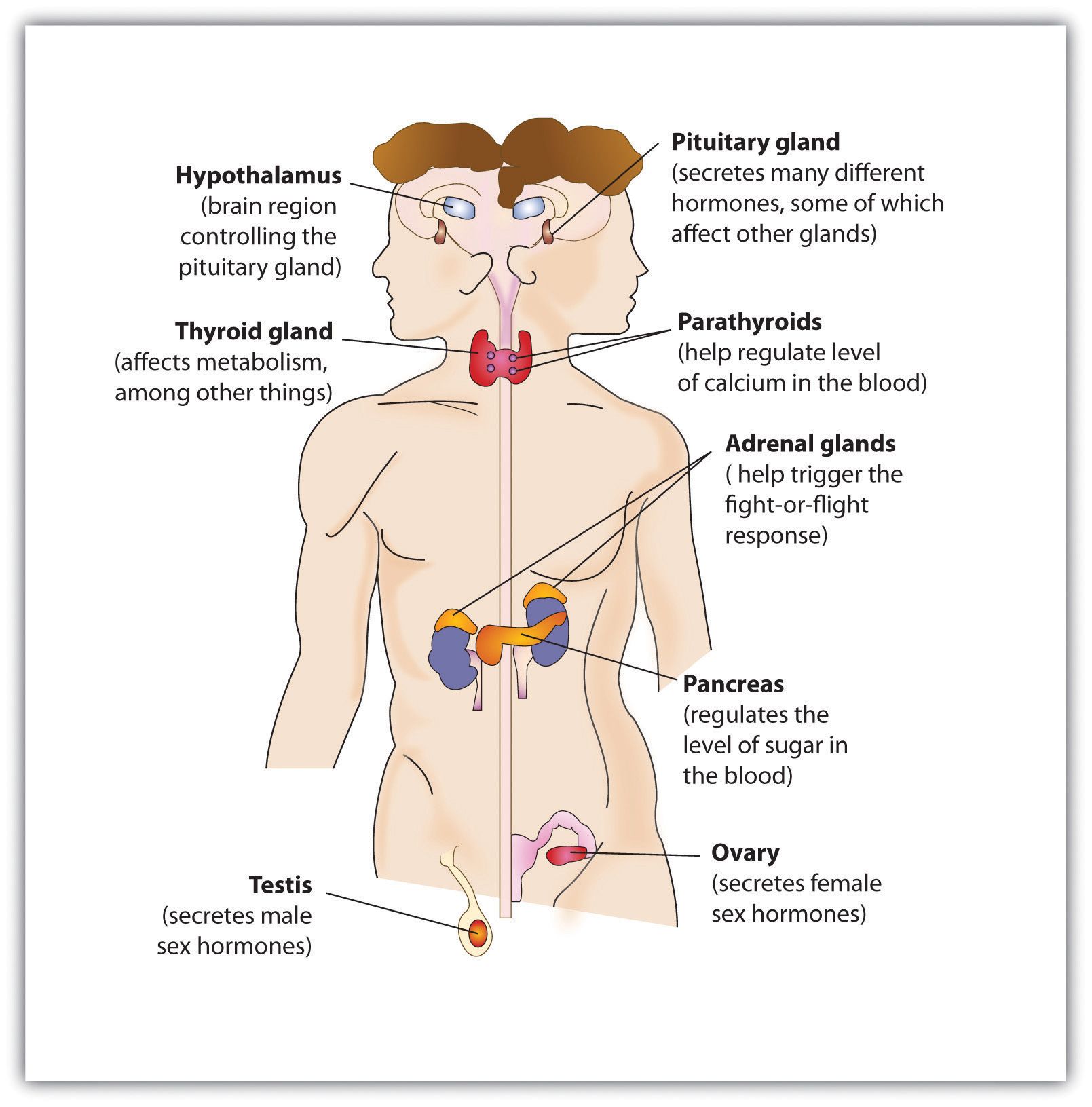
The substances released by your exocrine glands play important roles in your body. They do things like help regulate your body temperature, protect your skin and eyes, and even help mothers feed babies by producing breast milk.
Your exocrine glands include:
- salivary
- sweat
- mammary
- sebaceous
- lacrimal
Lymph nodes are often referred to as glands, but they’re not true glands. They’re part of your immune system and help your body fight infection.
You have glands throughout your body, all varying in size and function. Here are a few examples of these glands and what they do.
Thyroid gland
Your thyroid gland is located in the front of your neck, just below your larynx. It measures approximately two inches and has a shape similar to a butterfly. It secretes hormones that affect virtually every tissue in your body. Thyroid hormones regulate your metabolism, heart, and digestive function. They also play a role in your brain and nerve development, muscle control, and mood.
Your thyroid function is controlled by your pituitary, which is a small gland at the base of your brain.
Pituitary gland
The pituitary gland is a pea-sized gland at the base of your brain, just behind the bridge of your nose. It’s controlled by the hypothalamus, which sits just above it. The pituitary gland is often called the master gland because it controls a number of other hormone glands, including the:
- thyroid
- adrenal gland
- testes
- ovaries
Hypothalamus
The hypothalamus functions as a communication center for your pituitary gland, sending signals and messages to the pituitary to produce and release hormones that trigger the production and release of other hormones.
Your hypothalamus influences a number of your body’s functions, including:
- temperature regulation
- food intake
- sleep and wakefulness
- thirst
- memory
- emotional behavior
Pineal gland
Your pineal gland is located deep in the center of your brain. Its function is not completely understood, but we do know that it secretes and regulates certain hormones, including melatonin. Melatonin helps regulate your sleep patterns, which are also known as circadian rhythms.
Its function is not completely understood, but we do know that it secretes and regulates certain hormones, including melatonin. Melatonin helps regulate your sleep patterns, which are also known as circadian rhythms.
The pineal gland also plays a role in the regulation of female hormones, which affect the menstrual cycle and fertility.
Adrenal glands
Your adrenal glands are located at the top of each kidney. They produce various hormones, some of which include:
- cortisol
- aldosterone
- adrenaline
- a small amount of sex hormones called androgens
The hormones produced by your adrenal glands have several important functions. They help your body:
- control blood sugar
- burn fat and protein
- regulate blood pressure
- react to stressors
Pancreas
The pancreas — a long, flat organ located in your abdomen — is made up of two types of glands: exocrine and endocrine. The pancreas is surrounded by the small intestine, stomach, liver, gallbladder, and spleen.
The pancreas plays an important role in converting the food you eat into fuel for your body’s cells. It does this by producing digestive enzymes that are released into your small bowel to break down and digest food. It also makes hormones that control your blood glucose levels.
Sweat glands
Your skin is covered in sweat glands of which there are two types: eccrine and apocrine. Your eccrine glands open directly onto your skin and regulate your body temperature by releasing water to the surface of your skin when your body temperature rises.
Apocrine glands open into the hair follicle and are found in hair-bearing areas, such as the skin, armpits, and groin. These glands secrete a milky fluid, usually as a response to stress. Your body also contains modified apocrine glands:
- on the eyelids
- on the areola and nipples
- in the nose
- in the ears
Sebaceous glands
Sebaceous glands are located throughout your skin, though there are few on your hands and feet and none on your palms and soles. They secrete an oily substance called sebum that lubricates your skin.
They secrete an oily substance called sebum that lubricates your skin.
Most of these glands release onto a hair follicle, though a few open directly onto the skin’s surface, such as Meibomian glands on the eyelids, Fordyce spots on the genitals an upper lip, and Tyson glands on the foreskin.
These glands perform a few functions in your body, such as:
- regulating your body temperature by working with your sweat glands
- helping your skin retain moisture
- helping fight infection caused by bacteria and fungi
Salivary glands
Your salivary glands are located in your mouth. You have hundreds of small glands located throughout your:
- tongue
- palate
- lips
- cheeks
You have three pairs of major salivary glands, including the:
- parotid glands, located in front of and just below your ears
- sublingual glands, located just under your tongue
- submandibular glands, located below your jaw
Salivary glands produce saliva and empty into your mouth through ducts. Saliva serves a few important purposes, including moistening your food to help you chew, swallow, and digest it. Saliva also contains antibodies that kill germs to keep your mouth healthy.
Saliva serves a few important purposes, including moistening your food to help you chew, swallow, and digest it. Saliva also contains antibodies that kill germs to keep your mouth healthy.
Mammary glands
Mammary glands, which are a type of sweat gland, are responsible for the production of breastmilk. Males also have glandular tissue in the breasts, but estrogen produced during puberty triggers the growth of this tissue in females.
Hormonal changes during pregnancy signal the ducts to produce milk in preparation for the baby.
There are a number of different problems that can affect the glands. Depending on the glands affected, a person could experience symptoms that affect different parts of the body.
Thyroid disorders
Hypothyroidism and hyperthyroidism are common thyroid disorders. Hypothyroidism occurs because of an underactive thyroid that doesn’t produce enough thyroid hormones. Hyperthyroidism is the result of an overactive thyroid that produces too much thyroid hormone.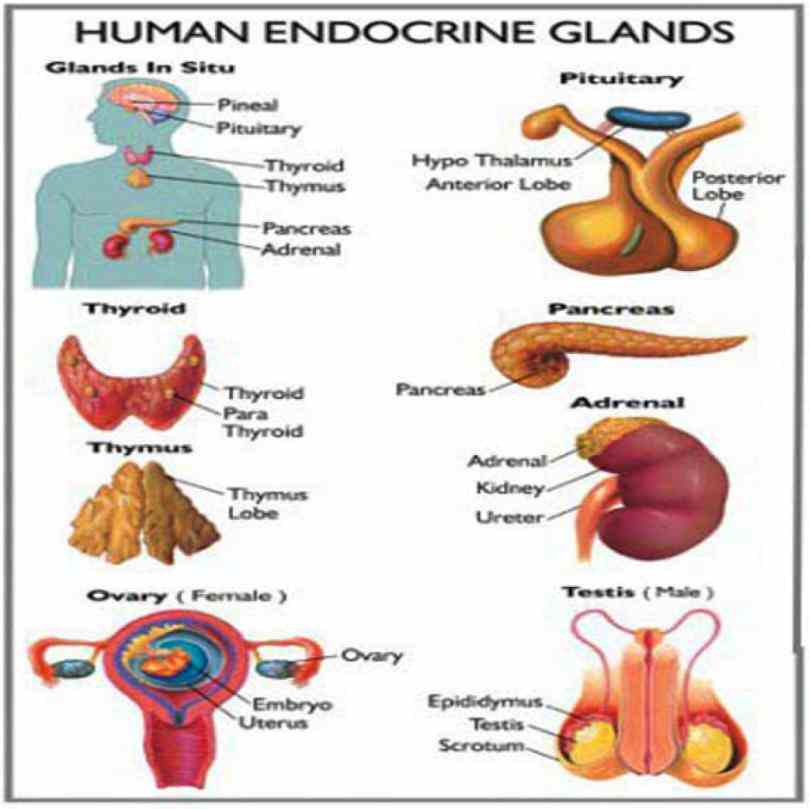 Both conditions can cause an enlarged thyroid gland, or goiter.
Both conditions can cause an enlarged thyroid gland, or goiter.
Hypothyroidism can also cause unintentional weight gain, fatigue, and a slow heart rate, while hyperthyroidism does the opposite, causing unintended weight loss, nervousness, and a rapid heart rate. Both conditions can usually be treated with medication to restore proper thyroid function.
Diabetes
A healthy pancreas releases insulin when blood sugar gets too high. Insulin causes your cells to convert sugar to use as energy or to store it as fat. In diabetes, your pancreas either doesn’t produce insulin or doesn’t use it properly, leading to high blood sugar.
Diabetes can lead to a number of serious complications, including nerve damage, heart disease, and stroke. There are two different types of diabetes. Common symptoms include increased thirst, changes in weight, and frequent or recurring infections.
Treatment depends on the type of diabetes, but may consist of medication, insulin, and lifestyle changes.
Adrenal gland disorders
Adrenal gland disorders are caused by too much or too little of a certain hormone, such as cortisol. Cushing syndrome, an adrenal disorder caused by high cortisol, causes weight gain, a fatty hump between the shoulders, and high blood pressure. It’s often caused by prolonged use of corticosteroids.
Adrenal insufficiency, which happens when your body produces too little cortisol, and sometimes aldosterone, can cause decreased appetite, weight loss, and muscle weakness. Adrenal disorders can be treated using medication, surgery, and other therapies, or by stopping corticosteroids.
Salivary gland disorders
The formation of stones or tumors, infections, and certain medical conditions, such as autoimmune disorders and HIV and AIDs, can prevent the salivary glands from functioning properly. When your salivary glands don’t produce enough saliva, it can affect chewing, swallowing, and taste. It can also increase your risk of oral infections, such as cavities.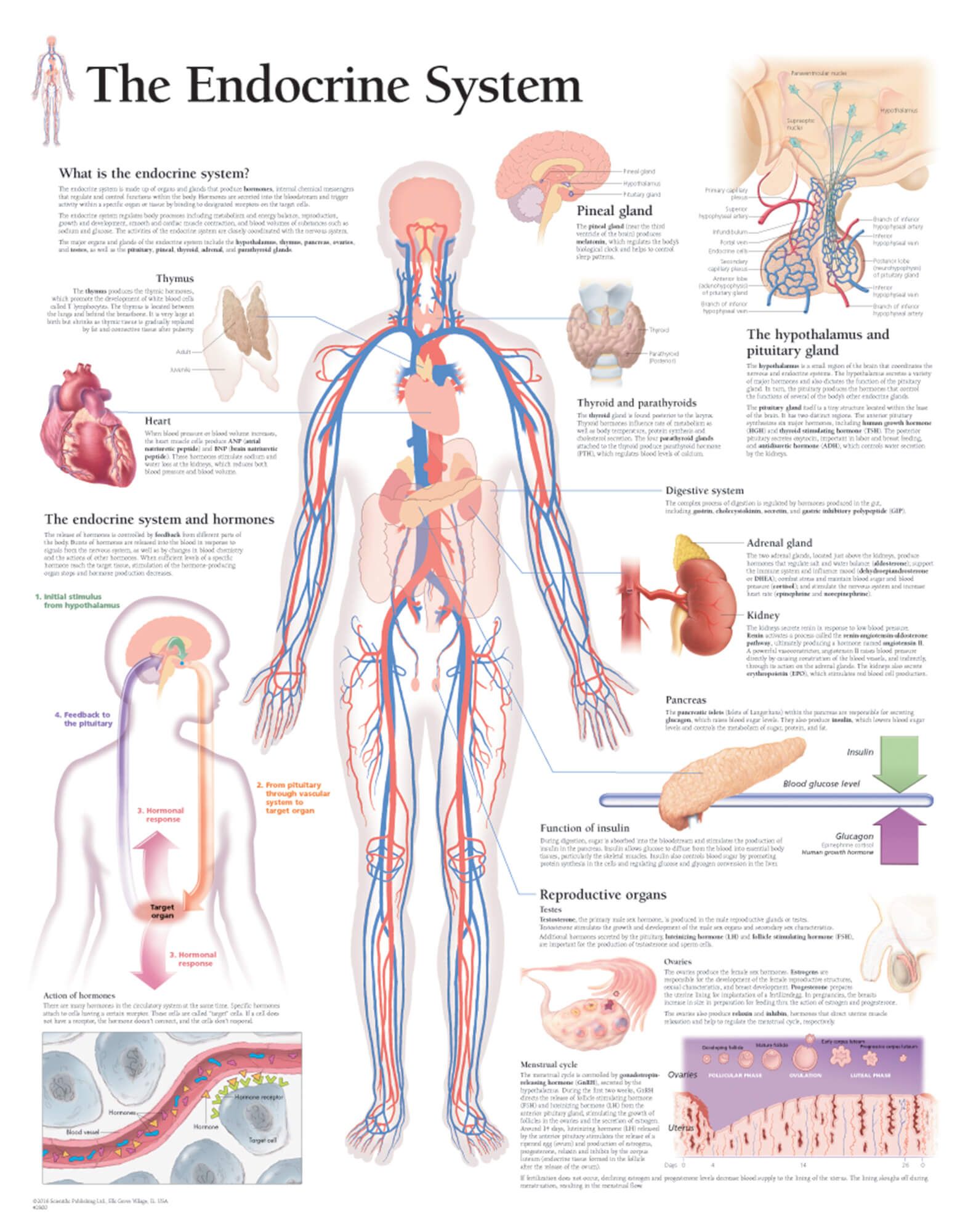
Symptoms often include pain or swelling in your face, neck, or under your tongue, and dry mouth. Treatment of salivary gland disorders depends on the cause and may include medication or surgery.
Problems with your glands can cause vague symptoms. See your doctor if you notice any unusual swelling or changes in your appearance, such as unexplained weight changes. Also see your doctor if you develop changes in your heart rate or palpitations.
Fatigue, weakness, and changes in your appetite lasting over two weeks should also prompt a visit to the doctor.
Your glands play a role in almost every bodily function. Endocrine glands secrete hormones to your bloodstream. Exocrine glands secrete other substances to your body’s exterior.
A problem with one of your glands needs to be treated to prevent serious complications. See your doctor if you suspect you have a gland disorder.
Human glands – classification and functions
4.3
Average score: 4. 3
3
Total scores received: 1279.
4.3
Average score: 4.3
Total scores received ratings: 1279.
Human glands are responsible for the regulation of physiological processes. These are specialized organs that secrete active substances. We talk about the types of human glands and their functions in this article.
The material was prepared jointly with the teacher of the highest category Shcherban Larisa Stepanovna.
Experience as a biology teacher – more than 19 years.
Species
Hormones are biologically active organic substances that bind to cell receptors and affect their vital functions of the body. Hormones promote growth and development, regulate life processes. A secret is a liquid containing active substances or waste products of a cell. Secrets are secreted on the surface of organs or in the cavity, hormones are released into the blood.
The classification of glands, depending on the secreted fluids, includes three types:
- endocrine or endocrine glands – secreted hormone enters the blood;
- exocrine or external secretion glands – the secret is secreted on the surface of organs or in their cavity, they have ducts;
- mixed secretion – glands secrete hormones into the blood and secretions into the ducts.

Endocrine glands, unlike exocrine glands, do not have ducts; hormones are secreted into the blood directly from the cells. Glands of mixed secretion have both ducts and secretory cells.
Endocrine glands
Endocrine glands secrete hormones. Their main function is the humoral regulation of human physiology.
Rice. 1. Endocrine glands.
Glands related to the endocrine system are described in the table.
Iron | Location | Secreted hormone | What is responsible for |
Pituitary | At the base of the brain, associated with the hypothalamus | Somatotropin | Promotes body growth |
Thyrotropin | Regulates the thyroid gland | ||
Adrenocorticotropin | Stimulates the adrenal cortex | ||
Prolactin | Regulates lactation | ||
Gonadotropic hormones | Influence the functioning of the gonads | ||
Epiphysis or pineal gland | In the midbrain | Melatonin | Regulates biorhythms |
Oxytocin | Regulates labor in women | ||
Serotonin | One of the main neurotransmitters that promotes the transmission of nerve impulses | ||
Thyroid | Under the larynx | Iodine containing hormones | Regulate metabolism |
Calcitonin | Incorporates calcium and phosphate into bone tissue, preventing skeletal wear | ||
Parathyroid or parathyroid glands | At the posterior surface of the thyroid gland | Parathormone | Regulates the concentration of calcium in the blood |
Thymus or thymus gland | Behind the sternum | Timalin, thymosin, IGF-1, thymopoietin | Regulate the immune system, participate in the differentiation of T-lymphocytes |
Adrenals | At the top of the kidneys | Adrenaline | Affects the heart and blood vessels, helps to respond quickly in stressful situations |
Cortisol | Regulates metabolism | ||
Aldosterone | Regulates the water-salt balance |
The thymus is greatly reduced in size towards the end of life. Most developed in children.
Most developed in children.
Exocrine glands
Endocrine or exocrine glands include:
- salivary – located in the oral cavity, produce saliva;
- gastric – secretes gastric juice, located in the epithelium of the stomach;
- intestinal – located in the small intestine, secrete enzymes, leukocytes, mucus, amino acids that promote digestion;
- liver – located on the right side of the abdominal cavity, secretes bile, which promotes the breakdown of fats;
- sebaceous – located in the dermis, secrete sebum, which makes the skin elastic and waterproof;
- sweat – located in the dermis, they secrete sweat, consisting of water, mineral salts, urea, which helps to cool the skin surface;
- lacrimal – located in the upper outer corner of the eye, secrete tears that wet the eyeball;
- milky – located at the nipples of a woman, they secrete milk.

Rice. 2. Exocrine glands.
The liver is the largest gland of vertebrates.
Glands of mixed secretion
Glands of mixed secretion include the digestive gland – the pancreas – and the gonads &ndash: ovaries and testicles.
Rice. 3. Glands of mixed secretion.
The pancreas secretes pancreatic juice, which contains enzymes and promotes the digestion of food, as well as a number of hormones – glucagon, insulin, somatostatin, which affects carbohydrate metabolism and blood sugar levels.
Sex glands do not produce secrets, but sex cells. The ovaries produce eggs, and the testicles produce sperm. In addition, the sex glands release hormones into the blood. There are two groups of female hormones:
- estrogens , affecting the work of the uterus;
- gestagens regulating the menstrual cycle, pregnancy, childbirth.
The testicles, the male gonads, produce androgens that are responsible for secondary sexual characteristics in men. The most important hormone in this group is testosterone.
The most important hormone in this group is testosterone.
What have we learned?
In the human body there are glands of internal, external and mixed secretion, which secrete hormones and secretions. Hormones enter directly into the blood, secretions are released through ducts on the surface or in the cavity. Endocrine glands with the help of hormones regulate metabolism, stimulate the growth and development of the body. Exocrine glands secrete secretions that moisten surfaces, aid cooling, or digestion. Glands of mixed secretion simultaneously secrete hormones and secretions. These include the sex glands and the pancreas.
Subject test
Hall of Honor
To get here – pass the test.
Liliya Janovskaya
9/10
Anna Zhdanova
10/10
Anastasia Skorinova 9000 3
10/10
Sergey Bazylchik
10/10
Galina Cherk
10/10
Abdishukur Ashurov
10/10
Olga Pavlova
6/10
Rus Rus
900 02 9/10
Daria Sergeevna
4/10
Avrora Poison
7/10
Report score
4. 3
3
Average score: 4.3
Total ratings received: 1279.
What is your score?
The role of iron in the body: deficiency, excess, sources
Enroll
October 17, 2021
read 7-10 minutes
Iron is responsible for many processes, among the main ones are the delivery of oxygen to organs, the regulation of respiration, and metabolism. All the most important about the mineral is in this article.
The material was commented and checked by Natalya Polenova, family doctor, cardiologist and nutritionist at GMS Clinic
The body does not produce iron on its own, a person receives 1-2 mg of this element with food. Approximately the same amount each of us loses with dead cells of the skin and intestines.
Iron functions
Iron helps support many important bodily functions, affecting vitality, concentration, gastrointestinal function, the immune system, and body temperature regulation. Its deficiency or excess immediately affects the well-being.
Its deficiency or excess immediately affects the well-being.
Exchange processes
Iron is an important component of hemoglobin, which is made up of red blood cells (erythrocytes). Hemoglobin contains about two-thirds of the iron in the body. It combines with oxygen, and red blood cells carry it from the lungs throughout the body. This mineral is also included in many elements responsible for cholesterol metabolism, the conversion of calories into energy, and the fight against toxins. Thanks to iron, the immune system copes better with its functions, and red blood cells use it to send carbon dioxide to the lungs for processing. It is also essential for the maintenance of healthy cells, skin, hair and nails.
What is hemoglobin and how does it affect well-being
© UNSPLASH
Pregnancy
During pregnancy, the amount of fluid in the female body increases. Due to this, the volume of blood and the production of red blood cells, which are needed to provide the fetus with oxygen and essential substances, increase dramatically. The blood becomes thinner, the level of hemoglobin drops. The body consumes iron as much as possible. Deficiency of the mineral can lead to early birth, low birth weight of the infant, as well as impaired cognitive development. Pregnant women with iron deficiency are more prone to infectious diseases because it negatively affects the immune system [1].
The blood becomes thinner, the level of hemoglobin drops. The body consumes iron as much as possible. Deficiency of the mineral can lead to early birth, low birth weight of the infant, as well as impaired cognitive development. Pregnant women with iron deficiency are more prone to infectious diseases because it negatively affects the immune system [1].
Energy
Insufficient iron in the diet can affect the efficiency with which the body uses energy. Due to its role as an oxygen carrier to the muscles and brain, iron plays an important role in mental and physical activity. A low level of this element can lead to problems with concentration, irritability and reduced stamina.
Iron norm
The recommended daily intake of iron depends on age, gender, lifestyle and health [2].
Children need more iron than adults: during the period of growth and formation of the body, any useful substances are consumed much faster. The daily rate depends on the age of the child: 4-8 years old – 10 mg, 9-13 years old – 8 mg. Starting in adolescence, when girls begin menstruating, their daily iron requirement increases.
Starting in adolescence, when girls begin menstruating, their daily iron requirement increases.
At the age of 19-50 years, women should receive 18 mg of iron every day, while men of the same age need 8 mg [3]. After menopause, a woman’s daily iron requirement is the same as a man’s – 8 mg each day.
Sometimes a person needs more iron than usual. It is necessary to monitor the level of iron in the blood during pregnancy and feeding, kidney failure, an ulcer, or gastrointestinal disorders that prevent the normal absorption of the mineral. In case of deficiency, a doctor should be consulted.
© PEXELS
Iron levels need to be treated with particular attention by athletes, as intense training can destroy red blood cells. Vegetarians and vegans also need to monitor this parameter, since iron obtained from plant foods is not absorbed enough.
You can read the continuation of the article at the link to RBC Style.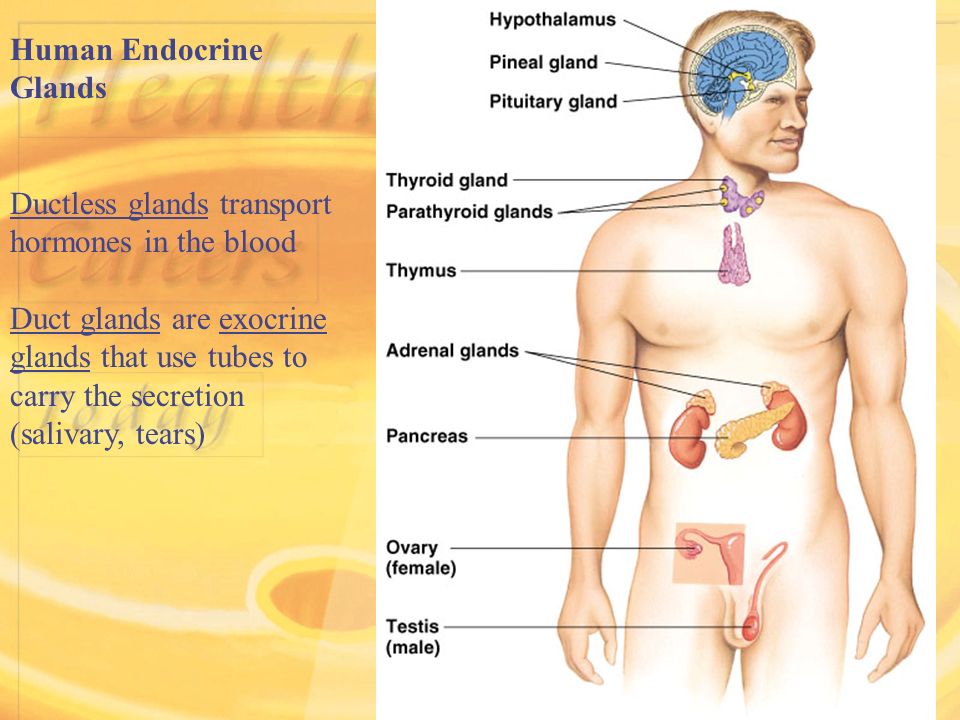
Pediatric cardiologist
Nutritionist (nutritionist)
Cardiologist
Family doctor
Therapist
Source RBC Style
Related Articles
5 ways to prolong skin youth without a cosmetologist
By following these simple rules, you can help your skin stay fresh and young for as long as possible. Let’s make a reservation right away – miracles do not happen, and beautiful, radiant skin is possible only in a healthy person. Especially for Super, GMS Clinic’s leading therapist, PhD, head of Longevity Svetlana Artemova explains what can help your skin besides regular check-ups and following a healthy lifestyle.
Read article
Generic or original: how to quickly find your way around the pharmacy Is it so? And what’s the difference?
Read article
Why do we need functional diagnostics?
To make a complete diagnosis, the doctor’s knowledge and his ability to feel or listen to the patient with a phonendoscope may not be enough. More research is needed.
More research is needed.
Read article
The main facts about separate meals: pros and cons
The text is not presented in full. You can read the entire article on RBC Style. Separate nutrition implies that food should be simple, and for better digestion, foods must be properly combined with each other. We understand whether this is so and what doctors think about separate nutrition.
Read article
Understanding lipid profile results
Text not fully provided. You can read the entire article on RBC Style. To understand why, due to high cholesterol, which does not bother a person and is “not visible on a plate”, you suddenly have to reconsider your habits, you need to figure out what this profile means.
Read article
Diabetes mellitus and chronic liver disease (Part 2)
Text provided incomplete.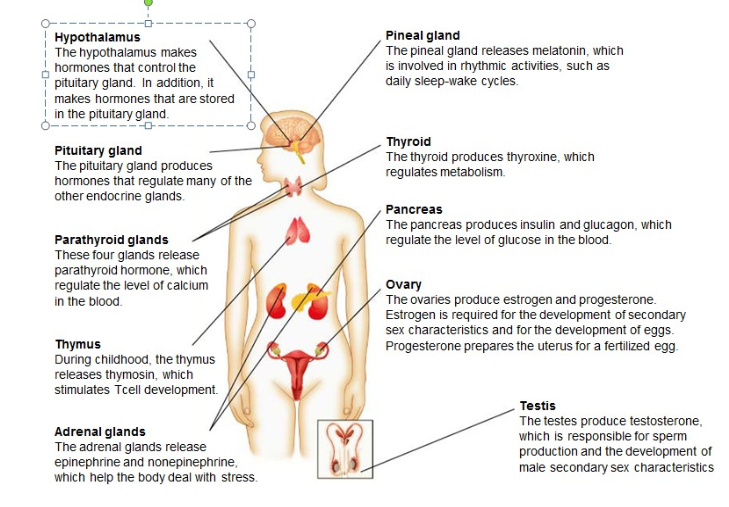 You can read the entire article on CyberLeninka. Features of the treatment of diabetes mellitus and other liver diseases.
You can read the entire article on CyberLeninka. Features of the treatment of diabetes mellitus and other liver diseases.
Read article
Other articles by this author
Heart attack or not? How a heart attack masquerades as a panic attack and other ailments
A simple and easy to understand checklist from experts on how to recognize various heart related ailments.
Read
article
In the wake of the pandemic
Let’s figure out if there is a connection between COVID-19 infection and Guillain-Barré syndrome together with Natalia Polenova, family doctor at GMS Clinic.
Read
article
What to do if a person is ill: a tactic that will save life
A passer-by has become ill. Or he fell and hit hard. Or suffocate. Few people know how to act in such a situation.


